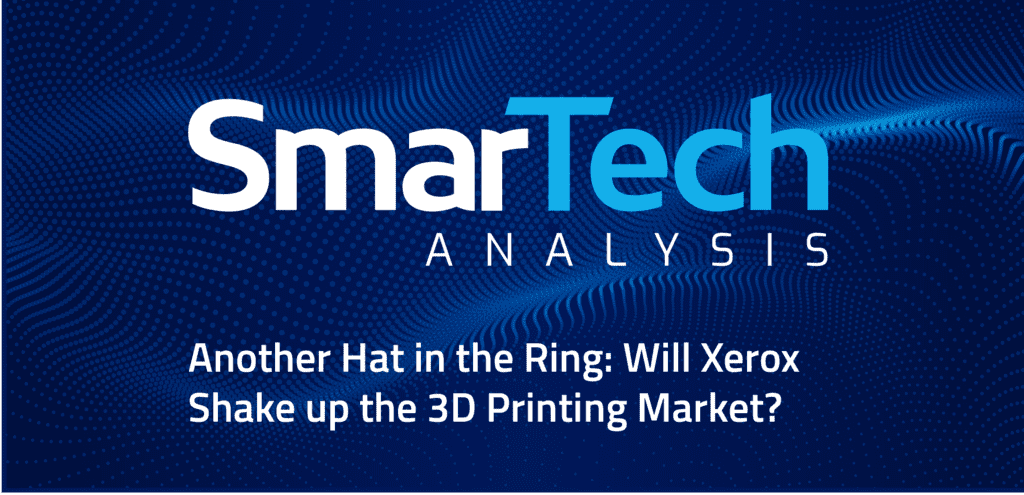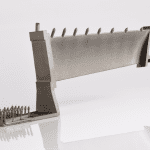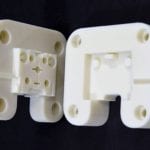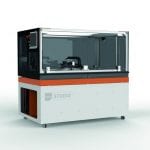At Xerox’s recent Investor Day 2019, a company that has been indirectly involved in the 3D printing industry for many years, announced its acquisition of metal additive manufacturing systems company Vader Systems and the company’s plans to develop a direct role in the market for 3D printing technologies.
Is Xerox entering 3D printing in this way, at this time, like a big fish leaping into a small, yet crowded pond? In the last two years, there are quite a few big fish which have jumped into the proverbial 3D printing ‘pond,’ and while said pond keeps getting bigger, it’s certainly becoming more and more crowded.
Statements from Xerox regarding their plans for 3D printing are very reminiscent of other major companies which have done the same in recent years, with the most direct comparison likely to be HP.
Will Xerox shake up the 3D printing market?
The company’s biggest and most direct influence for now appears will occur via its acquisition of Vader Systems. Vader, in SmarTech’s opinion, is an “aging startup” and a developer of what is claimed to be an innovative metal additive manufacturing technology based at some level on inkjet technology. While Xerox has also made some claims on its intent to bring solutions into the polymer 3D printing market including materials, printing systems, and software, we do not have concrete details as of now so we will focus on Vader and metal additive manufacturing.
What impact might Xerox have on metal AM?
From a technical perspective, Xerox’s acquisition makes some sense. The company has a longstanding history in inkjet technology, and has been a long time supplier of various elements of this technology to other 3D printer manufacturers who use it in their own printers. Vader’s technology is based on some of the same tenants of inkjet printing, with the inherent (theoretical) scalability that comes with it. With that in mind, a lot of my thoughts on how to answer the question of “will Xerox shake up the metal additive manufacturing market” end up circling back to “what are the reasonable expectations for inkjet-oriented technologies to compete against fusion or extrusion based technologies?”
There’s no easy way to answer or opine on that in a blog post, but for now, I’ve made a few observations and formed some opinions that have started to shape my thoughts on Xerox’s potential impact (keeping in mind that more concrete details are still to come).
First, the primary statements regarding Xerox’s own motives for the Vader acquisition (and apparently it’s overall upcoming 3D printing activities that will be revealed in more detail), are based on the perception that, “manufacturing customers want to use 3D printing, but the current offerings only serve the prototyping market well, not broad manufacturing.”
I consider this a very risky statement to put forth as the bases for a large investment and business strategy as this this perception is becoming rapidly outdated. I would argue that manufacturing customers are using current 3D printing technologies and they want to use them more as they are able to overcome production challenges. Suppliers and customers are increasingly messaging parts production in their AM efforts.
Xerox is also staking its position in metal AM on a technology that is decidedly not impacting the broader AM market as of yet. While there is an argument to be made for going with an outsider whose technology matches up closely with your own expertise, at this time I believe that the manufacturing community at large is ready to buy into a specific metal AM manufacturing process and work at fine tuning their processes and technologies to advance. To this end, technologies like powder bed fusion, and metal binder jetting have exponentially greater support in terms of end-to-end solutions.
There also comes a point where switching and experimenting with other metal AM methods provides diminishing returns for manufacturing customers. Xerox will have to sell the most influential users of metal AM today on a new process and at a time when we’re seeing such strong momentum behind some of the existing and more widely adopted methods.
While for now I retain a healthy amount of skepticism about Xerox’ potential success in metal additive manufacturing. I look forward to learning more about the specific solutions Xerox will bring in 2019 and beyond.
By Scott Dunham – Vice President, SmarTech Publishing












